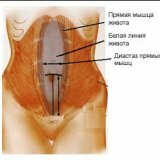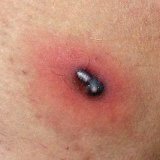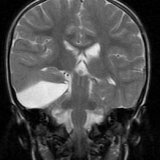Wisdom tooth extraction: does it hurt to remove 8 teeth
The beautiful and poetic "folk" name of the third molars has long and firmly entered even into the professional dentist vocabulary, and a variety of rumors and myths, the truth of which interspersed with conjectures and frightening fiction, disturb many people.It is painful to remove the wisdom tooth, how and when it is best done, and whether it is necessary at all - it is worthwhile to understand.
32 - the norm, is it
Numerous advertising posters, clips and text files are built on the information that the dental line of an adult person normally consists of 32 full teeth.However, the evolutionary changes in human anatomy and physiology, the nature of modern food and its processing contributed to the fact that the extreme powerful chewing devices were not so necessary for life.
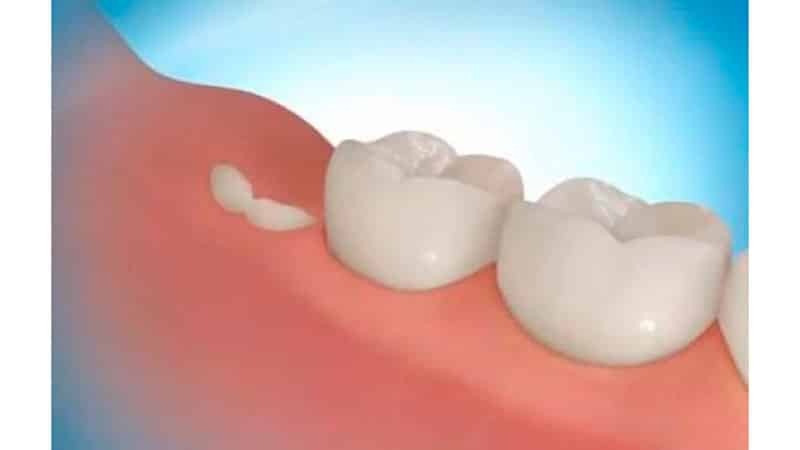
How the wisdom tooth grows

Wisdom teeth are now recognized as a rudimentary organ, as, for example, an appendix.It does not interfere with interfering, but there is also no special benefit.However, the gradual transition to other food and lifestyle provoked an anatomical decrease in the jawbone, so for many people these "echoes of ancestors" become a source of problems.And then the removal of the wisdom tooth( photo look in our gallery) becomes necessary.And it is with this circumstance that all fears, fears and rumors are associated, mainly related to the negative impact of the "eights" on further life and health.
So, the removal of 8 teeth is necessary if:
- the jaw structure does not allow the full development of the growing wisdom teeth;
- , there are complications in eruption;
- teeth occupy an incorrect position;
- there are diseases.
Timing and symptoms
The process of the emergence of wisdom teeth in an adult is similar to the eruption of the first molars in an infant, the signs are also similar:
- febrile states;
- a higher risk of contracting a viral infection;
- pain in the place of eruption;
- presence of redness, swelling of the gums;
- overall reduced health.

Removal of wisdom tooth photo
These symptoms can be increased by the appearance of dental diseases.As for the timing, they are very vague.The initial stage is due to the onset of puberty, and the final stage - purely individual features of development.It is these circumstances that provoke most of the problems and complications associated with the germination of the "eights".
Indications for liquidation of "wise" molars
In situations where eruption threatens with serious problems, complications occur when it is simply very painful for a patient to remove a wisdom tooth.
- The incorrect location of the "wise" tooth, provoked by the lack of room for growth, can lead to the displacement of neighboring "sevens."There are often cases when in search of a place such a tooth is directed toward the cheeks, traumatizing the inner surface with sharp edges, or the tongue, preventing the full use of the muscular organ.
- Pericoronaritis - a phenomenon that is very slowly "creeping out" on the surface of the gum tooth, a long time remaining covered with soft tissues.As a result, food particles are constantly falling into a kind of reservoir, which can not be extracted from there during tooth cleaning.The accumulation of food remains becomes an excellent refuge for numerous bacteria, as a result - there is fever, swelling of the gums, acute pain, sometimes suppuration.Removal of a "wise" tooth in this case is urgent.
- Carious formations are the most common problem of wisdom teeth.Because of inaccessibility, thorough cleaning becomes almost impossible at home, and the plaque quickly provokes the growth of caries.
- Infectious lesions( flux, cyst).If the tooth grows slowly enough, there is likely to be an infection under the gums.
Additionally, it may be necessary to remove the wisdom tooth without pain, heat and other manifestations based on the radiograph in case of hidden problems or prerequisites for complications.
To the issue of pain
Awareness of patients about possible complications and serious problems associated with the untimely removal of the "eights" does not prevent, however, people hesitate to the last with an appeal to the dentist.The reason in most cases is the people's "rumor" about the incredible painfulness of this manipulation.The most frequent phrase accompanying the refusal of medical assistance is "I'm afraid to remove the wisdom tooth".In this case, possible complications, painful eruption and the danger of developing serious infections scare people much less.
Yes, at the dawn of dentistry, this procedure was extremely painful, as, indeed, all the others, but modern means and technical equipment have long ago transferred this manipulation to the category of ordinary dental operations.Local anesthesia when removing a wisdom tooth 100% ensures the absence of pain while the doctor is working.However, after "thawing" a little soreness, swelling and discomfort are quite possible.These unpleasant events can increase in some cases:
- when taking patients with potent analgesics;
- with drug dependence, hidden from the treating specialist;
- with purulent inflammation;
- with complicated forms of teething wisdom, requiring surgical intervention.
If a complex extraction of the wisdom tooth has been performed, the healing may be somewhat slower and more painful, but with the consequences of procrastination and neglected problems these symptoms are incommensurable.
How to remove the "wise" molars
First of all, the dentist collects all data on the patient's condition and severity of the problem - anamnesis.The day before the tooth of wisdom is pulled out, the doctor gives recommendations on mandatory preparations and actions that are temporarily impossible.In each case, these instructions are individual, but there are general provisions:
- prohibition of alcohol and any means of anesthesia;
- obligatory food intake 2-3 hours before the procedure;
- hygienic treatment.

Complex removal of wisdom tooth
Immediately prior to the beginning of manipulations, several X-ray images are taken.It is necessary that the doctor accurately imagine the location of the teeth, the structure of the root system and possible difficulties."Eights" differ very deviated roots, especially those that are located on the lower jaw.And ignorance of the nature of germination, tilt and other features can lead to chipping, and pieces of tissue left in the hole will easily cause suppuration.It is by the level of curvature and possible complications that the type of intervention is determined: simple or complex.
- Simple manipulation usually takes about 10-20 minutes together with pre-anesthesia and is performed using dental forceps or elevators.After the end of the procedure, the doctor determines the dimensions of the well: in the case where it is likely that it can become a home for opportunistic bacteria, seams are superimposed.Then the patient receives recommendations for self-care for the wound and the appointment of a screening check( usually after 3 days).
- A complex procedure is performed with the mandatory involvement of a dental surgeon.Such intervention is most often necessary for eruptions, purulent infections and pericoronaritis.Such a tooth "eight", the removal of which occurs under the influence of strong painkillers, most often requires surgical treatment not only on soft dental teeth, but also on the bone, since the roots often grow firmly into the jaw.After the operation is completed, strong seams of non-absorbable materials are applied to the socket.Medical control is carried out every day or two.Sutures after removal of the wisdom tooth are removed after a full wound healing.
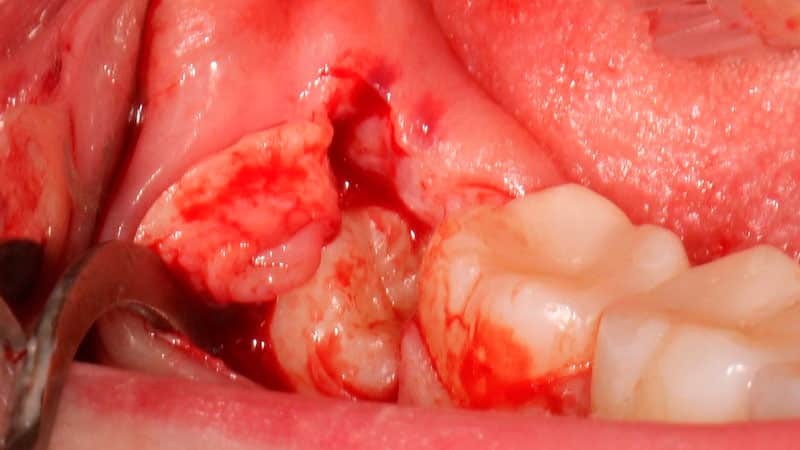
Complex wisdom tooth extraction
There is one more way to influence unwanted "eight", especially valuable for those who are not allowed to use conventional options - ultrasonic wisdom teeth removal.The method has high accuracy, less traumatization, additional antibacterial effect, high speed.

Removing 8 teeth
Life after removal
The most important and basic thing is to carefully and strictly observe all the prescriptions and recommendations of the treating specialist.After all, the wisdom tooth( photo after the removal can be found in the site's gallery) and after its liquidation can cause problems.To prevent this from happening, the patient, if necessary, is prescribed antibacterial and anti-inflammatory drugs, analgesics.When febrile syndrome occurs, the use of antipyretic agents is indicated.

The site of the remote wisdom tooth
Some general recommendations:
- after the procedure do not drink or absorb food for at least three hours;
- try not to open your mouth wide to avoid breaking the seams;
- cotton swab should be removed from the wound no later than 10 minutes after its application in order to reduce the risk of infection;
- during the day, try not to allow contact between the injured gum area and the hot one;
- say temporarily "no" mouth rinses and teeth cleaning( 1-3 days);
- do not touch the wound, do not climb there with sharp objects, do not press;
- it is advisable not to eat solid food;
- for any signs of infection, excessive pain, any disturbing manifestations, contact the dentist immediately.
And, perhaps, the most important of the recommendations - the answer to the question of how to remove the wisdom tooth at home, simply does not exist.Only under the supervision of a specialist, only under appropriate conditions and only under anesthesia.

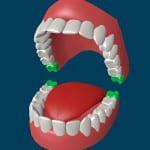 Removing wisdom tooth photo
Removing wisdom tooth photo 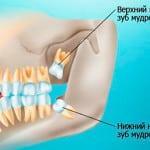 How do wisdom teeth grow?
How do wisdom teeth grow? The site of the remote wisdom tooth
The site of the remote wisdom tooth  Removing the 8 tooth
Removing the 8 tooth 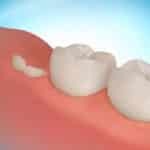 How the wisdom tooth grows
How the wisdom tooth grows  The complicated wisdom tooth extraction
The complicated wisdom tooth extraction 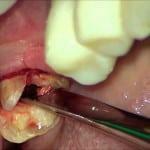 The sophisticated wisdom tooth extraction
The sophisticated wisdom tooth extraction 